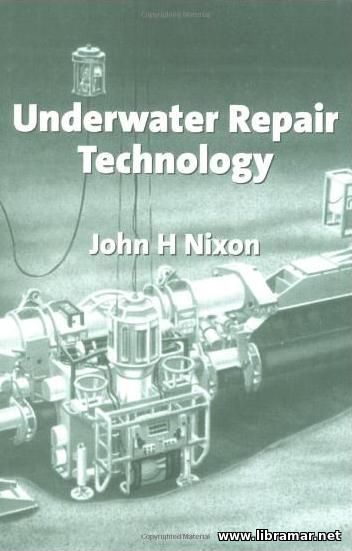Operating Shipboard Carbon Dioxide Systems

An engine room fire broke out on a tug involved in the towing of an offshore rig and the engine room was believed to be unmanned. The carbon dioxide system panel was opened, the alarm sounded and the engine room ventilation shut down. It took some time to confirm that the engineering specialist on board was not in the engine room. After this delay, it was decided to use the carbon dioxide system. In the stress of the situation, the officer who ordered to operate it forgot the instructions. He believed he was looking at the operating system with the backup. He only operated the first lever. Hours later, he realized he had not operated the system correctly. He decided to check the carbon dioxide room – it was obvious that no carbon dioxide actually reached the engine room. By then, the fire has burned itself out, completely destroying the engine room.
It is vital for the officers to be familiar with the carbon dioxide installations on board their ship; during a major emergency is a wrong time to work out how to use the system. Officers will be faced with demanding decisions. They must educate themselves about the system before they have to use it. If the engine room is on fire and unmanned, the carbon dioxide should be used as soon as possible. There is no benefit in delay. Fire team should only enter the 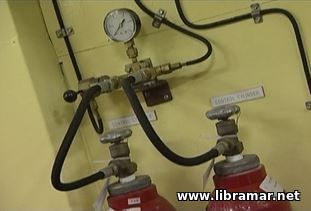 burning engine room if there are personnel inside. Delaying using the system only increases the damage to the engine room or cargo space and increases the risk to the ship and personnel on board.
burning engine room if there are personnel inside. Delaying using the system only increases the damage to the engine room or cargo space and increases the risk to the ship and personnel on board.
Carbon dioxide makes up a tiny proportion of the atmosphere, less than 0.1%. At higher concentrations it is not just asphyxiating – it is toxic. It affects the central nervous system – this begins at the concentration of 2% which after an hour or two causes headaches and difficult breathing. A concentration of 5% causes headaches, difficult breathing and sweating. The 10% concentration quickly cases unconsciousness, increased heart rate, headache and sweating. Concentrations exceeding 17% result in loss of control, unconsciousness, convulsions, coma and death.
In dealing with carbon dioxide systems remember that the hazard is much greater that asphyxiation by an inert gas. Although all systems will be different, they will have similar components. These will include a number of gas bottles, a manifold linking them all, and the release system involving main release valve. The release system will always be operated by small gas bottles as these systems are designed to operate without electrical power. There are always two operating systems – one in the carbon dioxide room and remote one outside it but not in the engine room. Two officers should be involved in the releasing of carbon dioxide.
 Generally, the master instructs the senior officer to release the gas. This officer is accompanied by another officer to carry out the actual operation. Usually, the general alarm will be sounded. Opening the cabinet usually sounds the carbon dioxide general alarm in the engine room. It also turns off the engine room ventilation and closes the fire flaps. As there is usually only enough carbon dioxide for one shot, there is no point putting it into a fully ventilated space.
Generally, the master instructs the senior officer to release the gas. This officer is accompanied by another officer to carry out the actual operation. Usually, the general alarm will be sounded. Opening the cabinet usually sounds the carbon dioxide general alarm in the engine room. It also turns off the engine room ventilation and closes the fire flaps. As there is usually only enough carbon dioxide for one shot, there is no point putting it into a fully ventilated space.
If these actions are not automatic, then an operator will need to stop the ventilation and close the flaps. Then wait for 10 seconds before releasing the carbon dioxide. Many systems are fitted with the built-in delay to allow the ventilation to stop before the gas is released. Some ships also have systems flooding the cargo holds. Officers need to be certain they know how to select the right hold and the appropriate number of gas bottles. Activating this system requires the operation of two separate levers. The first supplies pressure to the cylinder; in the carbon dioxide room this handle also goes down. This opens up the valves in the cylinders so pressurizing the manifold. The indicator in the last bottle in the system operates. Inside every cylinder there is a spring operated valve – it opens when the pressure is applied, releasing the carbon dioxide.
The second lever is pulled down, and this operates the second lever in the carbon dioxide room, causing the main 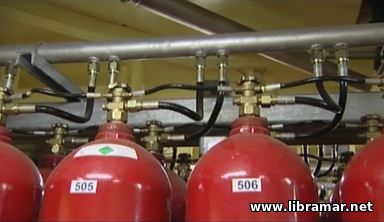 release valve to open. The gas travels to manifold into the pipework that takes it to the required space. Once the system has been operated, the next step is to visit the carbon dioxide room to check that the gas has been released. This must be done wearing full breathing apparatus as even a small leak can raise the concentration of carbon dioxide to dangerous levels. There are a number of things to check.
release valve to open. The gas travels to manifold into the pipework that takes it to the required space. Once the system has been operated, the next step is to visit the carbon dioxide room to check that the gas has been released. This must be done wearing full breathing apparatus as even a small leak can raise the concentration of carbon dioxide to dangerous levels. There are a number of things to check.
First – has the main valve opened? If it has then it is almost certain that the gas has been released. Secondly – have the tallies on the cylinders blown? This is a useful double-check. There are two secondary checks. There should be ice on the pipes leading from the cylinders to the manifold and, finally, there should be no pressure on the manifold. If also these indicators show that the gas has released, there is just one more thing to do. It is worth opening the valves on all gas bottles as thee will still be some carbon dioxide in them because it is likely that the internal valve will close the cylinder before all the gas has gone.
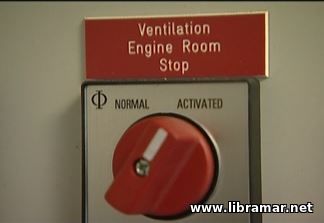 Opening all the valves might take some time if there is lot of cylinders. If the carbon dioxide has not been released, it should be immediately be manually released using the system in the carbon dioxide room. Finally, the space that has been filled with carbon dioxide must be left for 24 hours before any entry is attempted. Always check the temperature of the space before entry. A suitable thermometer, such as laser thermometer, shall be kept outside the engine room for this purpose. Even then, the space shall be thoroughly ventilated before entry and the carbon dioxide level checked. As carbon dioxide is heavier than air, great care must be taken in the first few hours after entry as there still might be pockets of the gas remaining.
Opening all the valves might take some time if there is lot of cylinders. If the carbon dioxide has not been released, it should be immediately be manually released using the system in the carbon dioxide room. Finally, the space that has been filled with carbon dioxide must be left for 24 hours before any entry is attempted. Always check the temperature of the space before entry. A suitable thermometer, such as laser thermometer, shall be kept outside the engine room for this purpose. Even then, the space shall be thoroughly ventilated before entry and the carbon dioxide level checked. As carbon dioxide is heavier than air, great care must be taken in the first few hours after entry as there still might be pockets of the gas remaining.
Flooding the engine room with carbon dioxide will stop the engine and leave the ship without power. A major engine room fire will do the same. The ship will then drift. The anchor should be lowered as soon as the ship has reached the depth of water where it will be effective. The master will remain on the bridge and should train personnel about their role in an emergency. Communication with coastal authorities, nearby ships and the operator should be started before carbon dioxide is released. The ship will need help and advice.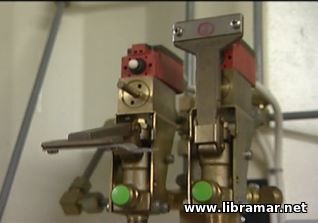
Routine maintenance of the system is the responsibility of the engineers. Usually there will be the monthly checks of the system. The gas bottles must be checked at least once a year. Before maintaining the system, the chief engineer should consider the risks. It is worth thinking about blanking off the system while it is being maintained. This may mean establishing a temporary fire watch.it has become standard procedure to blank off the system during dry dock to minimize the risk of accidental release. In each situation, the engineering department needs to consider the risks and manage accordingly. Always take great care when maintaining your carbon dioxide system – you might need it one day!
The "Read Later" function allows you to add material to this block with just one click. Just click on the icon and read the articles that interest you at any convenient time.


